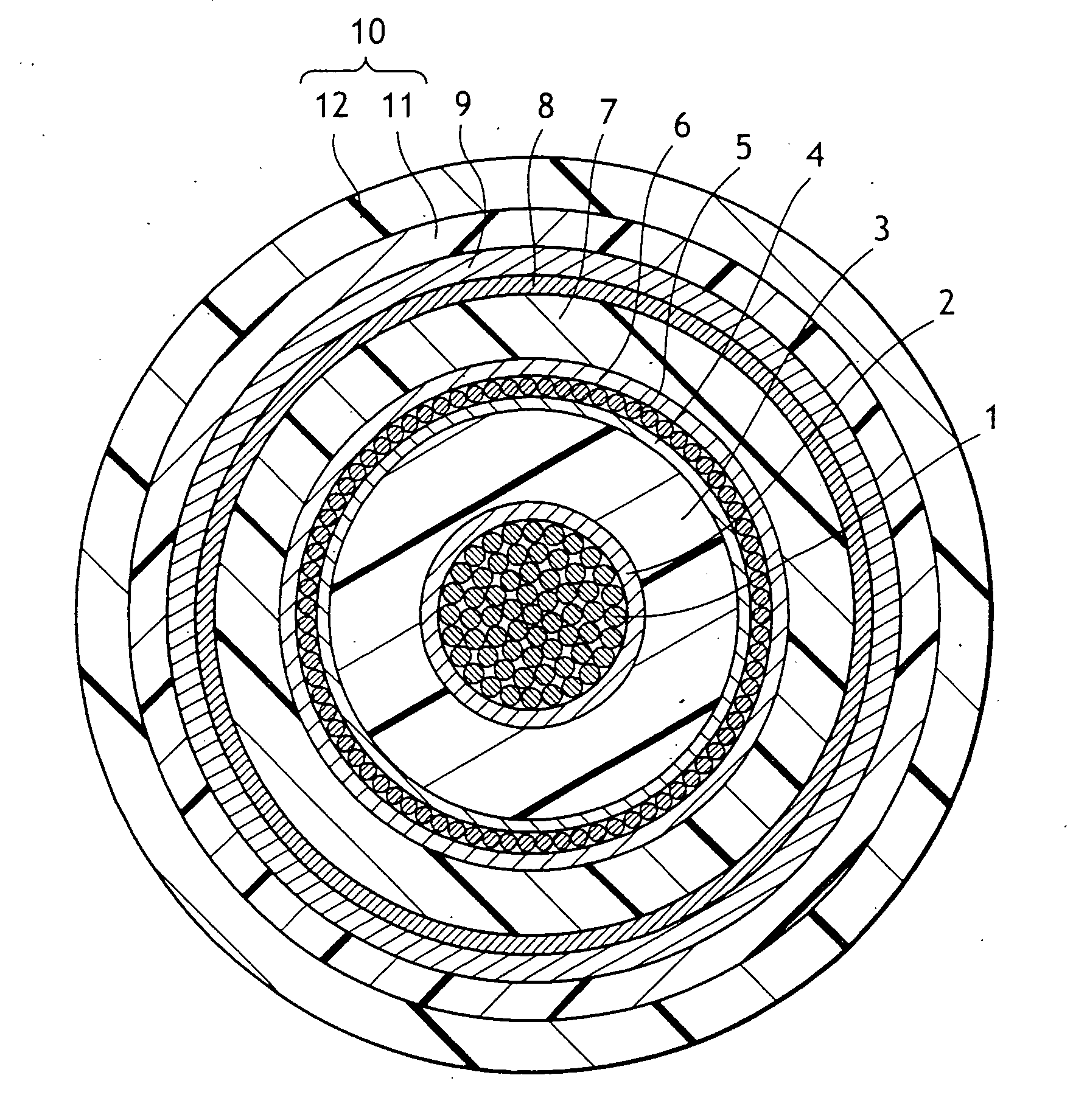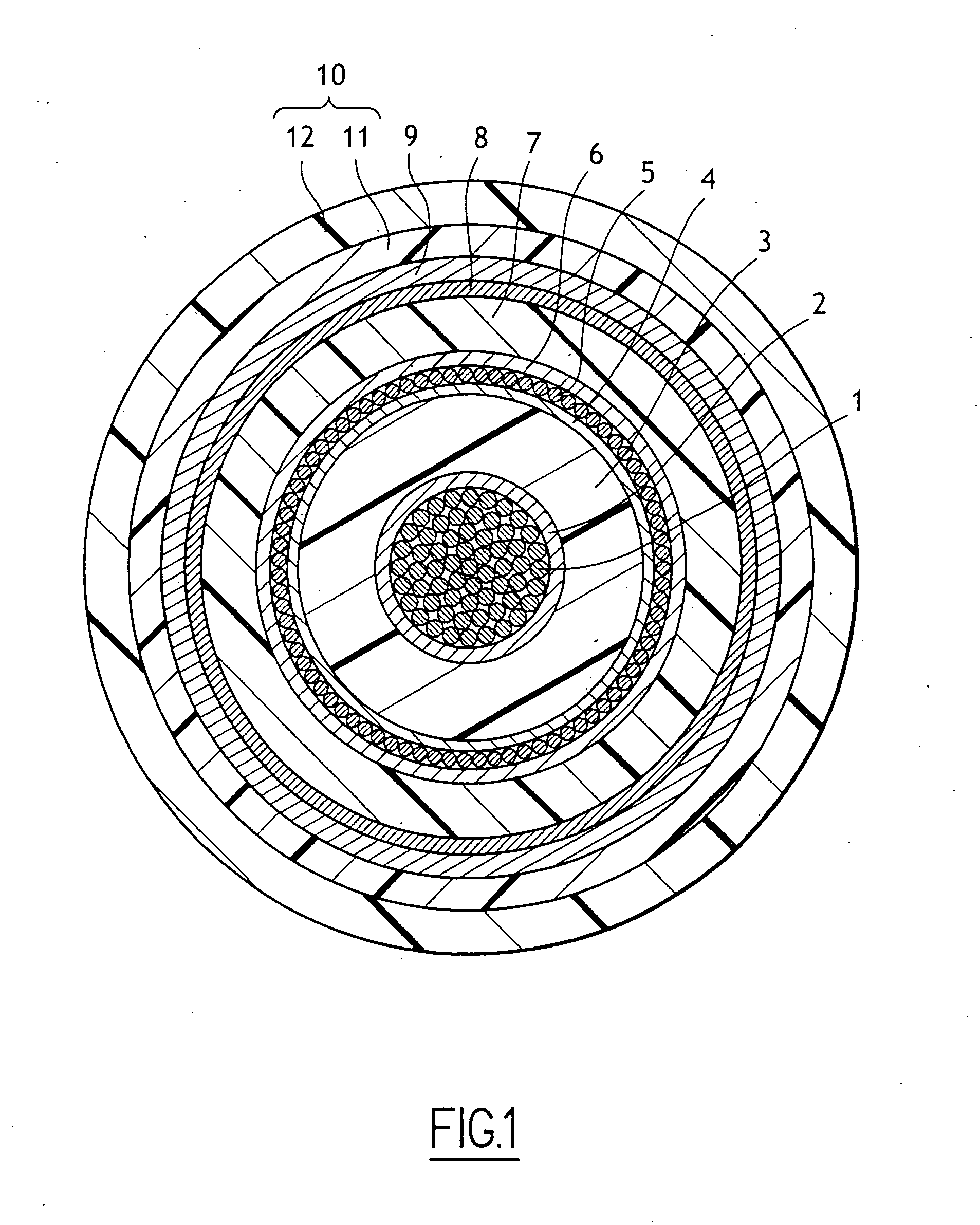Flame-resistant cable
a flame-resistant cable and filler technology, applied in the direction of plastic/resin/waxes insulators, organic insulators, conductors, etc., can solve the problems of reducing the insulating performance of the cable, the risk of fire propagation is particularly high, and it is not possible to incorporate flame-resistant fillers into the insulating layer of the medium-voltage or high-voltage cable. to achieve the effect of minimizing the secondary effect of fire-proofing
- Summary
- Abstract
- Description
- Claims
- Application Information
AI Technical Summary
Benefits of technology
Problems solved by technology
Method used
Image
Examples
Embodiment Construction
[0016] With reference to FIG. 1, the cable of the invention is shown with the thicknesses of its layers deliberately out of proportion compared with reality in order to facilitate understanding. The cable shown comprises in conventional manner a central conductor 1 made up of copper wires that are twisted together. The central conductor is surrounded in succession by a layer 2 for reducing electrical stress, an insulating layer 3, a second layer 4 for reducing electrical stress, a second electrical conductor 5 constituted by a sheet of copper wires wound helically, a third layer 6 for reducing electrical stress, a second insulating layer 7, a fourth layer 8 for reducing electrical stress, a metal shield 9 constituted by a helically-wound copper tape, and an outer sheath 10 in contact with the metal shield 9.
[0017] In accordance with the invention, the outer sheath 10 comprises an inner layer 11 of a flame-resistant synthetic material that conserves mechanical stability when it is s...
PUM
| Property | Measurement | Unit |
|---|---|---|
| Fraction | aaaaa | aaaaa |
| Thickness | aaaaa | aaaaa |
| Heat | aaaaa | aaaaa |
Abstract
Description
Claims
Application Information
 Login to View More
Login to View More - R&D
- Intellectual Property
- Life Sciences
- Materials
- Tech Scout
- Unparalleled Data Quality
- Higher Quality Content
- 60% Fewer Hallucinations
Browse by: Latest US Patents, China's latest patents, Technical Efficacy Thesaurus, Application Domain, Technology Topic, Popular Technical Reports.
© 2025 PatSnap. All rights reserved.Legal|Privacy policy|Modern Slavery Act Transparency Statement|Sitemap|About US| Contact US: help@patsnap.com


